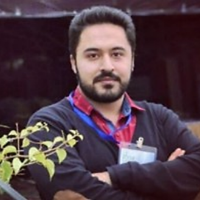ICDS 2025

Shiraz University of Medical Sciences, Iran
Abstract:
Objective:
Today, designing nanofibers with antibacterial properties using
electrospinning technology is one of the attractive approaches for wound
healing.
Methods & analysis:
We fabricated a nanocomposite from
polyethylene oxide (PEO) coated with copper nanoparticles (NPs) and defensin
peptide with wound healing and antimicrobial properties in different ratios of
CuNPs/defensin (2/0 mg), (1.5/0.5 mg), and (1/1 mg) in the fixed contain
polymer (98 mg). Then, the nanofiber properties were investigated by SEM,
tensile, DSC, and BET analysis. Also, the antibacterial properties against S.
aureus and E. coli,
antioxidant, and in-vivo wound healing effects and histological analysis
of the designed nanocomposites were evaluated in rat models.
Results:
Our SEM images showed that CuNPs and defensin were
properly coated on the PEO
surface. According to the tensile, DSC, and antibacterial analysis results, the
most appropriate
feature was related to CuNPs/defensin (1.5/0.5 mg), with maximum elasticity,
heat resistance,
and antibacterial activity. Furthermore, the designed nanocomposites showed the
best performance as a wound closure agent by increasing dermis and epidermis
volume density, stimulating
fibroblast cells and collagen fiber production, and improving skin vessels.
Conclusion:
According to our results, PEO nanofibers
loaded with CuNPs and defensin have the
best potential for wound healing, and they can be used as antibacterial
materials in the textile,
drug, and medical industries.
Biography:
Dr. Farhad Moradi (Specialist in Medical laboratory Sciences (PhD, MSc
& BSc) &
Doctor of Philosophy in Medical and clinical Bacteriology (Ph.D.)) has completed his PhD from Department of Bacteriology & Virology, School
of medicine, Shiraz University of Medical Sciences, Shiraz, Iran.
